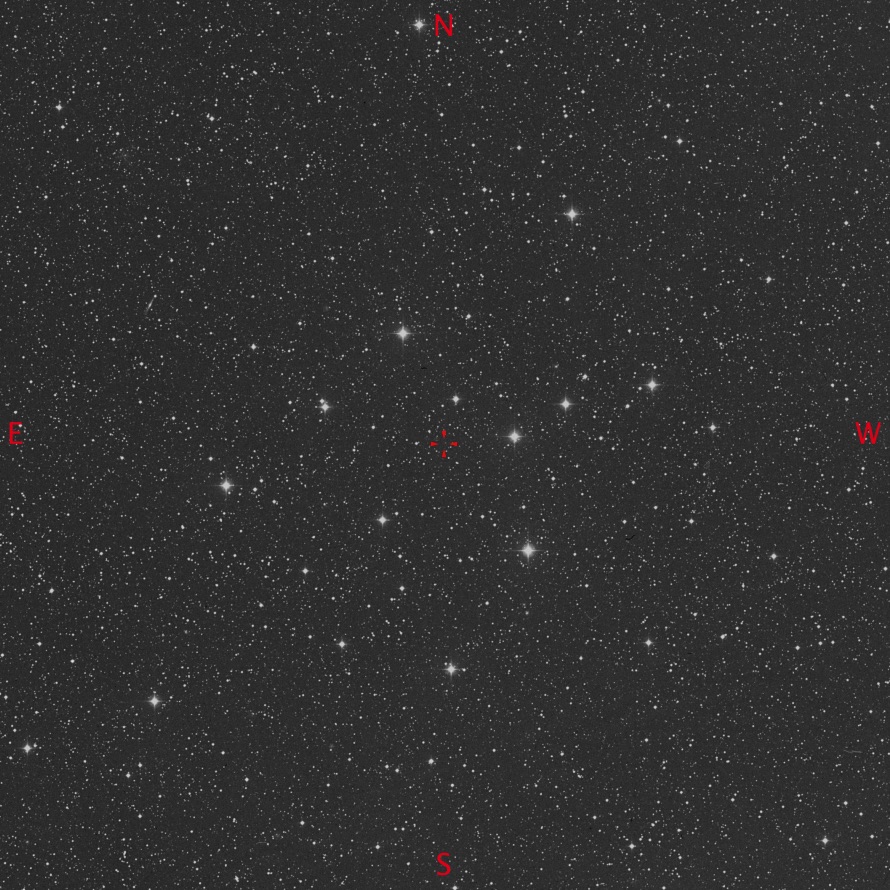A little bit of low cloud around, but the clear gaps in between them are large enough for a little keyhole astronomy.
Session Stats
- Date: 11/10/2015
- Time: 20:29 – 21:28 UT
- Seeing: II Mostly Stable,
- Transparency: III Mostly Clear,
- Temp:9.6c,
- Pressure: 1004mb,
- Humidity: 91%,
- Dew Point: 8.0 ,
- Wind: 6.0mph,
- SQM: 18.4
- NELM: 5.3
Collinder 349, IC4665

In the TMB 80 f/6, 26mm Plossl, 18 X, 2.8° West is to the 6 O’Clock.
There is a bright 2.4 mag star to the SW at the edge of the FOV. At the centre of the cluster there are 16 stars ranging from 6.8 to 8.2 mag all within a 30 arc/min circle. There are a number of other stars of a similar magnitude outside of this circle, which would make you think this cluster is much larger at about 1.5 degrees.
This is also the last but one, of the Caroline Herschel Objects. Only NGC253 to go and all the observations in this list will be complete.
M33, NGC598

In the TMB 80 f/6, 26mm Plossl, 18 X, 2.8° West is to the 7 O’Clock.
About 20 arc/min from the centre of the FOV are four stars of about 8.0 mag. These form the limits of the faint fuzz of the edges of the galaxy as seen through this scope.
Switching to the Altair 250mm f/8 RC, 14mm Delos, 145 X, 29.8′ The core within the fours stars previously mentioned now takes on a granular, mottled appearance. After about 5 minutes, I’m starting to see the very faint Southerly arm as it curves out towards the West. In amongst this very tenuous arm, I can make out what looks like stars on first glance, but after a while you see that they are not point light sources at all. These must be the brighter HII regions.
Downloading the image after this observation confirms what I’m seeing , so I’m quite chuffed to observe these considering all the other observations of M33 in the past have been really disappointing.
Surprisingly, none of the structure to the N/W was visible at all. Pushing the power with the Altair 250mm f/8 RC, 10mm Delos, 203 X, 21.3′, didn’t help at all.